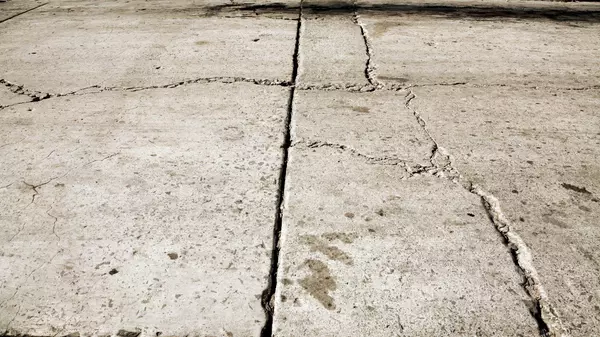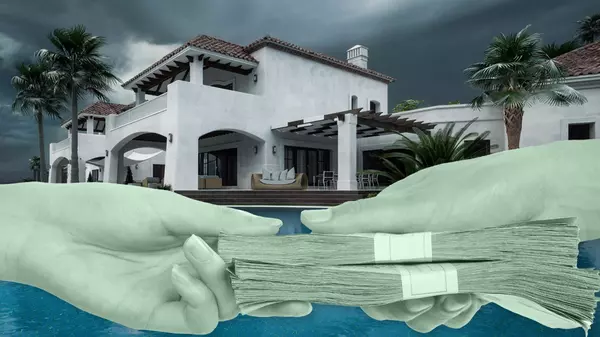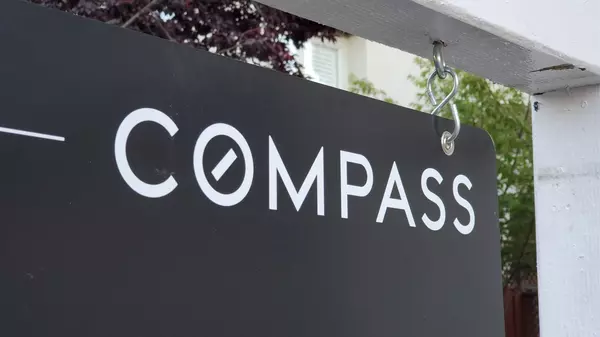Do Tiny Horses and Other Gimmicks Really Sell Houses Faster?
A listing in California's Ventura County just went viral—not for a slashed price or staging with Restoration Hardware, but for enlisting the help of Lemon, a therapy miniature horse.
“I’ve always had creative ideas, but for a long time I didn’t apply them in real estate,” says Lucy Oliveira, the listing agent behind the viral campaign. “After eight years in this business, I’ve noticed the industry can feel both fast-changing and yet very stagnant at the same time.”
Lemon’s adorable tour through an otherwise standard townhome—peeking into windows, checking out the sink height, exploring the fireplace—helped turn a regular listing into social media gold.
It also sparked a bigger question: In a housing market defined by buyer fatigue, seller frustration, and homes sitting longer than they used to—do creative antics like this actually help a home sell faster? Or are they just a fun distraction in a market that’s struggling to move?
Why agents turn to 'gimmicks'
A slowing market has given buyers more power, and this has increased the pressure on sellers and their agents to stand out. Some, like Oliveira, are experimenting with creative listing photos. Others are trying some inventive uses of seller's credits.
But don’t call them gimmicks.



“I usually think of them as being less like ‘gimmicks’ and more like short-term amplifiers,” says Jacob Naig, a real estate agent and investor at We Buy Houses Des Moines.
Jules Carneiro, a luxury real estate adviser at Premier Sotheby’s International Realty, used a $5,000 credit at closing to lure out-of-state buyers to see her $1,375,000 listing in Winter Park, FL.
“I’ve observed that there has been an increase in this type of incentive,” she says. “It’s an innovative way to attract potential buyers and demonstrates a commitment to going above and beyond for customers.”
And that amplification is becoming more important than ever. After 21 straight months of rising inventory, many listings are stagnating—especially in oversupplied metros in the South and West, according to Realtor.com® data.
At the same time, buyers remain sidelined by a double whammy of high home prices and even higher mortgage rates, with monthly costs up more than $1,200 since 2019. The result is what Realtor.com senior economist Jake Krimmel calls a market “stuck in neutral,” where neither side has clear leverage.
In that kind of standoff, amplifiers of any kind can be a lifeline. They cut through the ennui of both buyers and sellers, make listings more memorable, and create opportunities for social media virality.
Do gimmicks actually work?
They incite wonder, intrigue, and interest, but do these tactics generate offers? For Oliveira, the results were immediate.
“The listing received a big boost in views, calls, and showings, not just from serious buyers, but also from people who were intrigued by the creativity and wanted to learn more,” she says. “That’s exactly the goal: to capture attention in a crowded market and convert that buzz into real exposure for my clients.”


Still, not every agent is sold on these methods as a path to closing.
“They can create attention, but clicks don’t necessarily lead to offers,” cautions Ben Mizes, president of Clever Real Estate and a licensed agent. “I have seen themed open houses and quirky listing photos generate traffic. But if the home itself is not real, the excitement around it dies pretty quickly.”
In other words, a fun, attention-grabbing listing can jump-start interest, boost showings, and help your home stand out in crowded online feeds. But they rarely close the sale on their own. Serious buyers still care about the fundamentals: price, location, layout, and condition.
“Viral moments are great for getting lots of attention,” Mizes adds, “but the mini horse can only get somebody to the door. The comps and the kitchen are what seal the deal.”
Advice for sellers in today’s market
In a slower, more selective housing market, creativity can open doors—but only if it’s done with care.
“The best marketing ‘hooks’ should accentuate the property’s real value,” says Mizes. “A drone tour that shows walkability or staging that leans into lifestyle, that’s where a ‘gimmick,’ if you want to call it that, flows directly into the sale.”
The key is to use novelty to highlight, not distract from, what makes the home special. A well-placed hook might draw attention, but it’s still professional photography, competitive pricing, and thoughtful staging that do the heavy lifting.
Oliveira agrees—but argues that in today’s market, sticking to tradition can be just as risky as going too far.
“In this day and age, if you don’t think outside the box, you’re limiting how many people you can reach,” she says. “I’ve found that the more I lean into creativity and authenticity, the stronger the response is. Real estate has been marketed the same way for decades, but now is the time to reimagine how we show up.”
Her agency, ACME 805, is built around that ethos.
“For me, it’s about being true to my ideas, following through, and trusting that the right people will resonate with that. I definitely plan on expanding on this idea.”
So what’s the smart path forward for sellers and agents experimenting in a more stagnant market?
- Be thoughtful: Choose creative tactics that make sense for the property and the likely buyer.
- Get seller buy-in: Always secure the homeowner’s permission—and if possible, involve them in the strategy.
- Anchor the marketing in substance: Bold ideas should complement strong photography, accurate pricing, and clear listing information—not replace them.
- Tie it back to lifestyle: A creative hook works best when it reflects how someone might actually live in the home.
In a moment defined by affordability barriers and longer time on the market, gimmicks alone won’t close a deal—but smart, story-driven marketing just might get buyers in the door.
Beyond the laughs and likes
Lemon, the miniature horse, proves that a little creativity can spark attention in surprising ways. An otherwise typical listing captured local (and now national) headlines, all because someone dared to try something different.
Still, gimmicks alone won’t sell a house. At best, they’re an invitation—a way to get buyers in the door and curious enough to look closer. From there, it’s still about the bones of the home, the location, the layout, and the price.


“Be authentic. That’s the biggest thing,” Oliveira says. “Last year, I was reminded that leaning into what makes you unique is the only way to stand out. If you love something, let it show in your work. Create a plan and stick with it. Markets will always shift, but those moments are actually an opportunity to refine your business, build trust, and strengthen your brand.”
The takeaway for agents and sellers alike? Viral buzz can help, but lasting impact is built through substance and sincerity.
“The real work, the kind that builds longevity, is often done when things feel tough,” Oliveira adds. “If you can keep showing up authentically, your clients will feel that—and that kind of trust and professionalism lasts far beyond a single transaction.”
Categories
Recent Posts










GET MORE INFORMATION

